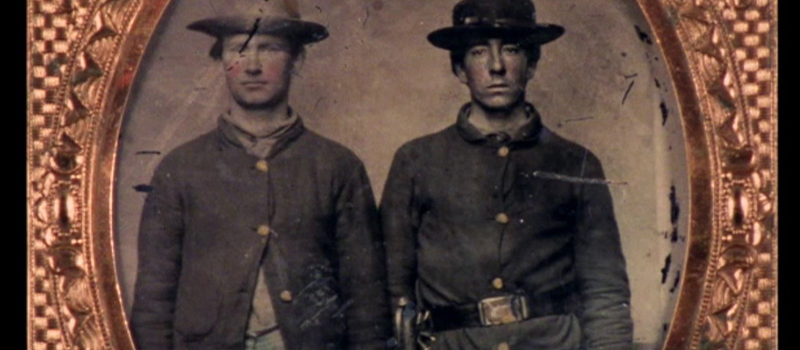Back in the 1800s, there was a lot to be desired when it comes to having what you needed to thrive in your environment. Because resources were scarce, it usually led to the general public either going without or working with what they could muster. And the Civil War-era soldier was no different. Here are a few things they usually carried with them from battle to battle that made their time a little less burdensome.
Cloth Bandana
Bandanas are a multi-purpose item that serves many purposes even now in today’s time, as it did for a Civil War soldier. Useful for everything from wiping the sweat off your face, to an impromptu dust mask, water filter, or tied around your neck as protection from the sun, a bandana’s use is limited only by your imagination. Heck, they even make good improvised tourniquets and bandages!
There is no use a soldier had for a bandana that you won’t also potentially have. Because they are lightweight, cheap, and take up almost no room, I like to keep several in my emergency kit, and one on my person. You can make your own by cutting and hemming cloth salvaged from old shirts, or just from scrap. You could even be tactical and make them out of camouflage cloth!
A Comb
What now? A comb? Do you mean that they ran a comb through their gnarly hair each morning? Well, quite frankly yes, they did even though they couldn’t properly maintain the wild manes that were growing on the top of their heads. But that is not why I highlight this packed item. You are probably thinking that of all the interesting, and practical things soldiers carried in the Civil War, and this isn’t what you were eagerly looking to add to your survival gear. Well, break out a cup of coffee (or burnt acorns and chicory if you want an authentic Confederate experience) and stay with me here.
There are a great many survival reasons to carry a comb. Some have to do with personal comfort, and others to do with health and sanitation. Civil War soldiers often had to fight lice as much as they had to fight each other. A fine-toothed comb was an important part of keeping their hair free of lice. And if you ever have seen the effects of head lice, you’d be grateful for something that you could do to remedy the situation as quickly as possible beyond shaving it all off.
Now you might be wondering why that is so important for us to have in our possession today if there was a time that you are “bugging out”. After all, this is the 21st century, and sanitation is far better. Even so, people still get lice, and in a survival situation, the conditions that encourage lice are far more common.
On top of that, it’s just nice to be able to comb your hair. Sometimes it just feels good, and sometimes it keeps hair from becoming tangled and matted. Either way, lice, grooming, or comfort, a comb takes up little room in your kit or pocket and should be carried. After all, it can’t hurt anything but can help a lot of things.
A Sewing Kit
A sewing kit is an essential tool for the Civil War soldier? Well, you can’t be hardcore if your clothes are falling off your body today, and it was the same back then. With hardly a seamstress in the ranks, and barely any woman (who might have known the sewing skills) the soldier had to attend to not only his own bobs and buttons but also to the tears and rips that happen in battle. They didn’t readily have a PX that they could go and get a replacement. They made due as they could.
Sometimes called a “housewife” by soldiers, sewing kits included thread, buttons, and several sizes of needles. There might also be cloth patches, a small set of scissors, and even a thimble.
In a survival situation, you are often stuck with what you have on you. Civil War soldiers faced similar problems, especially in the more industrially primitive southern states that relied on increasingly shrinking imports from England to supply many of their needs.
Clothing wears out through hard use and gets damaged through all manner of activities. Having a good sewing kit can extend the useful life of clothing and gear that might be damaged. This not only conserves your supplies but may preserve irreplaceable items.
It isn’t enough to have a sewing kit though, you need to understand how to use it. Right now in fact. Gear is beyond worthless if you can’t effectively make use of it. Learn how to sew, replace buttons, and patch clothing now, while you still have the chance to do so in a nonemergency setting. Otherwise, you’ll be sitting by the campfire, trying to patch your only pair of pants, and hating yourself for not learning how to earlier.
What Else Was Lugged Around
Civil War soldiers carried a great many things more. Along with their issued and personal weapons, they had to carry ammo (gun powder, tack, and lead), tools for their rifle, a bedroll, shelter half, mess kit, canteen, rations, maybe some spare socks and underwear, personal effects, and whatever other items they might have found useful or were issued.
What was carried certainly varied by unit, time issued in the war, and their location of where they signed up. Many soldiers marched off to war at the beginning overburdened with all manner of knick-knacks. As time went on, experienced soldiers learned to lighten their loads and carry what was only needed. There was no amazing assortment of survival in a Civil War soldier’s pack, just the tools they needed to survive, a scant few personal comforts, and if they were fortunate, a few pictures and letters from loved ones or family.
Remember the army packs, and belts that were later developed didn’t exist at the time. They had very little in terms of gear that could be carried into battle on their persons.
There is no hard and fast list of what soldiers carried, and even a generalization is insufficient to cover all the possibilities or even obvious items. The National Museum of Civil War Medicine does an excellent job of discussing things carried by Civil War soldiers, and you can probably draw a lot of inspiration from that list for your own purposes.
Conclusion
Civil War soldiers lead a tough, brutal life full of disease, hunger, combat, and other unpleasant things. They operated in that space between civilization and chaos and required constant resupply to maintain their effectiveness. Even Union troops, who had all the power of a massive industrial powerhouse sometimes lacked proper equipment, while their Confederate brethren increasingly had to make do with whatever they could scrounge or improvise.
At an individual level stripped of politics and rhetoric, the Civil War was also a war for individual survival, and the men who fought it could only count on their governments for so much help in that area. Survival, their personal survival began with the person, and all the gear in the world is meaningless without training on what and how to use it.
Civil War soldiers had to learn how to sometimes live off the land, make do with inadequate food and equipment, live in all manner of environmental conditions with crude or makeshift shelter, and at the same time somehow keep themselves healthy, mentally sounds, and ready to engage in combat.
The gear and supplies they carried did not make the man. It was the ingenuity of the man, and their grit and determination, and sometimes luck that were the greatest survival tools at their disposal.
No matter what list of Civil War equipment and supplies you might read, they are all valueless without the will and knowledge to use them under adverse conditions. It is a mindset that requires you to make use of your own knowledge and skills first, and then to make your equipment or supplies work for you second.
The important thing to take away is that it isn’t always the big, expensive pieces of kit that matter, but the small things. Remember, when you don’t take care of little things, they can quickly snowball into something big. So don’t forget the tools to solve little problems, and you’ll find you have fewer big ones.






